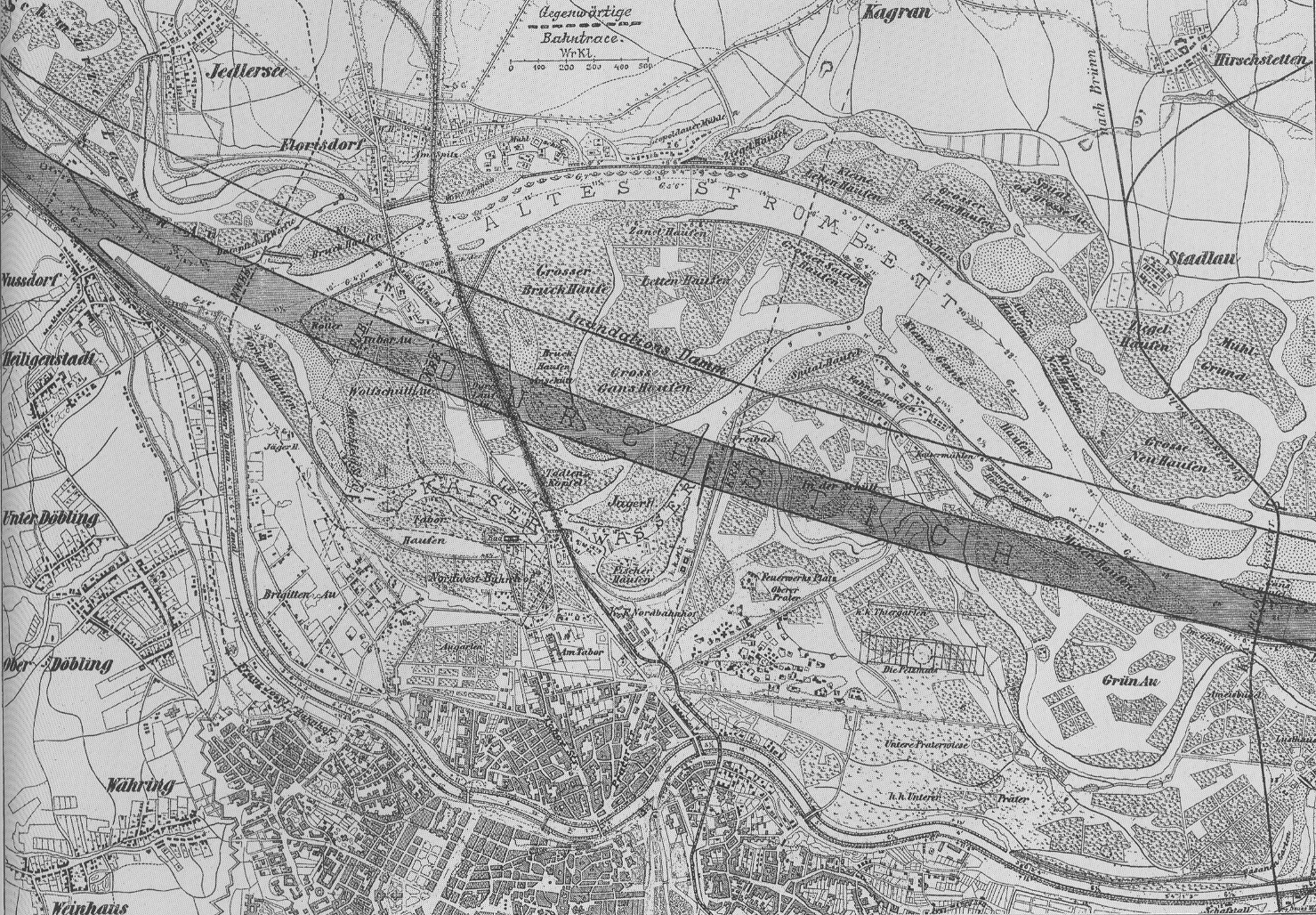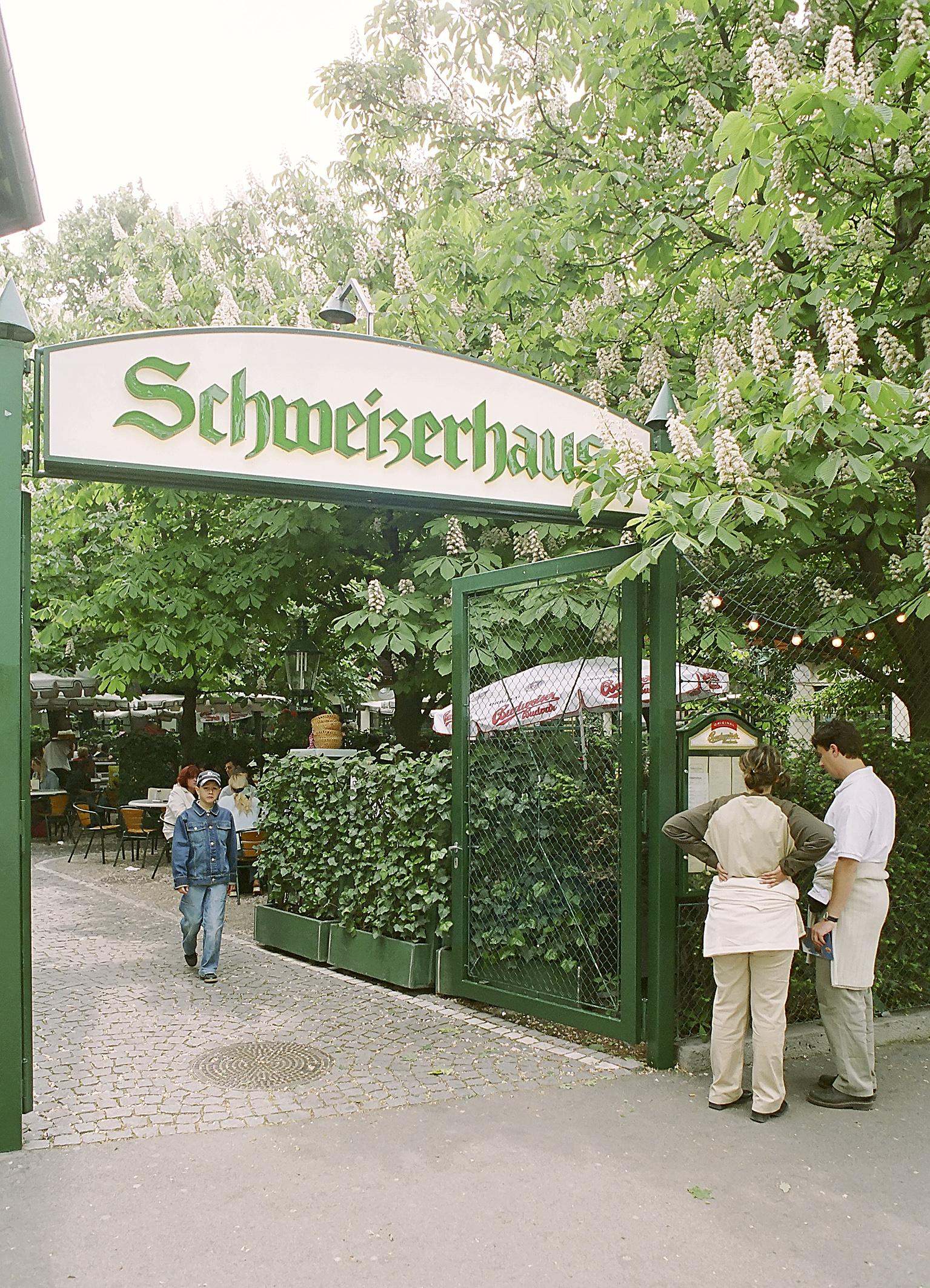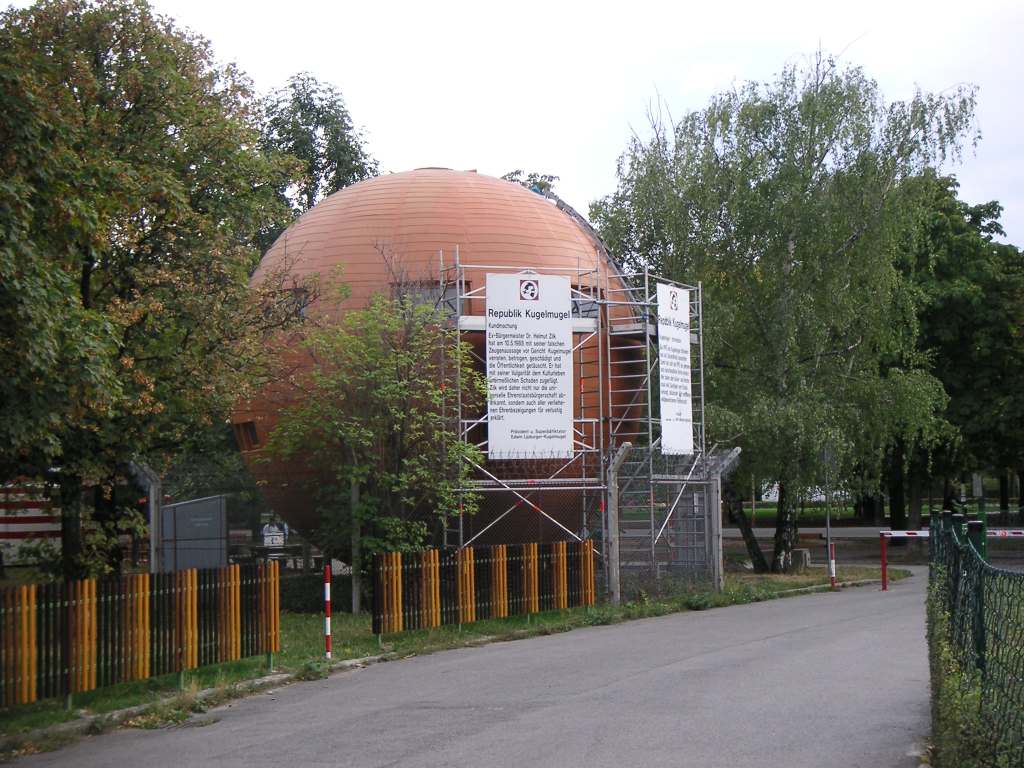|
Leopoldstadt
Leopoldstadt (; ; "Leopold-Town") is the 2nd municipal district of Vienna () in Austria. there are 103,233 inhabitants over . It is situated in the heart of the city and, together with Brigittenau (20th district), forms a large island surrounded by the Danube Canal and, to the north, the Danube. It is named after Leopold I, Holy Roman Emperor. Due to its relatively high percentage of Jewish inhabitants before the Holocaust (38.5 percent in 1923), Leopoldstadt gained the nickname (' Matzo Island'). This context was a significant aspect for the district twinning with the New York City borough Brooklyn in 2007. Landmarks Places of interest include the ''Wiener Prater'' (from Latin ''pratum'' "meadow"), former imperial hunting grounds to which the public was denied access until 1766. The area of the ''Prater'' closest to the city centre contains a large amusement park, known as the ''Volksprater'' ("People's Prater") or ''Wurstelprater'' (after the Arlecchino, Harlequin-type fi ... [...More Info...] [...Related Items...] OR: [Wikipedia] [Google] [Baidu] |
Brigittenau
Brigittenau () is the 20th districts of Vienna, district of Vienna (). It is located north of the central districts, north of Leopoldstadt on the same island area between the Danube and the Danube Canal. Brigittenau is a heavily populated urban area with many residential buildings.Statistik Austria, 2007, webpage statistik.at-23450 . Wien.gv.at webpage (see below: References). The district's name comes from the Brigitta Chapel, built between 1645 and 1651. It consists of a good tract of land secured by the regulation of the Danube 1870–75, and many of the major streets are named after members of the Danube Regulation Commission. Therefore, it does not contain any distinctive historical areas. Brigittenau was separated from the 2nd district in 1900. Earlier component districts were named ''Schottenau'', ''Wolfsau'', ''Taborau'', and ''Zwischenbrücken''. The best-known landmark is the Millennium Tower, Vienna, Millennium Tower. The district also includes Adolf Hitler's forme ... [...More Info...] [...Related Items...] OR: [Wikipedia] [Google] [Baidu] |
Wiener Prater
The Prater is a 6 km² public park in Vienna's 2nd district, Leopoldstadt. The name "Prater" is often used to refer to the Wurstelprater, an amusement park within the area. History Royal hunting ground The Prater was first documented in 1403 and served as an imperial hunting ground from the 16th century onwards. Emperor Maximilian II expanded the area, introducing enclosures and hunting lodges. Access to the Prater remained restricted, with entry granted only to select individuals, such as nobles and imperial officials. Throughout the following centuries, various rulers reinforced these restrictions, further limiting public access. In 1538, to establish a direct connection between the Palais Augarten and the hunting grounds in the Prater, the 4.4 km long, straight ''Hauptallee'' was created, cutting through the forest, making it a continuous route to the '' Lusthaus''. Public access In 1766, Emperor Joseph II opened the Prater to the general public, allowing people o ... [...More Info...] [...Related Items...] OR: [Wikipedia] [Google] [Baidu] |
Vienna
Vienna ( ; ; ) is the capital city, capital, List of largest cities in Austria, most populous city, and one of Federal states of Austria, nine federal states of Austria. It is Austria's primate city, with just over two million inhabitants. Its larger metropolitan area has a population of nearly 2.9 million, representing nearly one-third of the country's population. Vienna is the Culture of Austria, cultural, Economy of Austria, economic, and Politics of Austria, political center of the country, the List of cities in the European Union by population within city limits, fifth-largest city by population in the European Union, and the most-populous of the List of cities and towns on the river Danube, cities on the river Danube. The city lies on the eastern edge of the Vienna Woods (''Wienerwald''), the northeasternmost foothills of the Alps, that separate Vienna from the more western parts of Austria, at the transition to the Pannonian Basin. It sits on the Danube, and is ... [...More Info...] [...Related Items...] OR: [Wikipedia] [Google] [Baidu] |
Districts Of Vienna
The districts of Vienna ( German: ''Wiener Gemeindebezirke'') are the 23 named city sections of Vienna, Austria, which are numbered for easy reference. They were created from 1850 onwards, when the city area was enlarged by the inclusion of surrounding communities. Although they fill a similar role, Vienna's municipal districts are not administrative districts (''Bezirke'') as defined by the federal constitution; Vienna is a statutory city and as such is a single administrative district in its entirety. Districts District locations The boundaries of each district have been shown as a layer on thimap The following are locations of the 23 districts: # Innere Stadt is the city centre, with numerous historical sites and few residents. # Leopoldstadt is the island between the Danube and the Donaukanal, with Praterstern, Vienna's most frequented traffic spot, and the Prater with Vienna's iconic Giant Wheel. # Landstraße is on the right bank of the Donaukanal, and includes t ... [...More Info...] [...Related Items...] OR: [Wikipedia] [Google] [Baidu] |
Danube Canal
The Donaukanal (, ''Danube Canal'') is a former arm of the river Danube, now regulated as a water channel (since 1598), within the city of Vienna, Austria. It is long and, unlike the Danube itself, it borders Vienna's city centre, Innere Stadt, where the Wien River (''Wienfluss'') flows into it."Donaukanal", aeiou Encyclopedia (see below: External links). The Donaukanal bifurcates from the main river at the Nußdorf weir and lock complex, in Döbling, and joins it again just upstream of the "Praterspitz", at the Prater park in Simmering. The island thus formed between the Donaukanal and the Danube holds two of the 23 districts of Vienna: Brigittenau (20th District) and Leopoldstadt (2nd District). The canal is crossed by fifteen road bridges and five rail bridges. Because in German, the name ''Kanal'', which has been used since about 1700, evokes associations of an open sewer, attempts at renaming the Donaukanal have been made (one suggestion was ''Kleine Donau''—' ... [...More Info...] [...Related Items...] OR: [Wikipedia] [Google] [Baidu] |
Schweizerhaus
The Schweizerhaus (literally "Swiss house") is a Viennese restaurant, rich in tradition, that is inseparably linked with the Prater, a large public area and park in Leopoldstadt, the second district of Vienna, Austria's capital. Beer garden The restaurant has a huge beer garden which is subdivided into smaller areas, each of which is named accordingly to a town district of Vienna (itself being situated in Leopoldstadt, the 2nd of 23), with the bar being an exception. Its name ''Franz-Josef-Bahnhof'' (railway station) is taken from the Vienna train station of the same name. There are also two areas named for Vienna city sectors: Oberlaa and Kaisermühlen, so called independent regions. This arrangement is meant, above all, for easier orientation within the garden, and the various geographical reference points serve as an aid for the crew. Besides the classic Viennese culinary specialties, such as ''goulash'' and ''Wiener Schnitzel'', the trademark dish of the restaurant is ''S ... [...More Info...] [...Related Items...] OR: [Wikipedia] [Google] [Baidu] |
Brooklyn
Brooklyn is a Boroughs of New York City, borough of New York City located at the westernmost end of Long Island in the New York (state), State of New York. Formerly an independent city, the borough is coextensive with Kings County, one of twelve original counties established under English rule in 1683 in what was then the Province of New York. As of the 2020 United States census, the population stood at 2,736,074, making it the most populous of the five boroughs of New York City, and the most populous Administrative divisions of New York (state)#County, county in the state.Table 2: Population, Land Area, and Population Density by County, New York State - 2020 New York State Department of Health. Accessed January 2, 2024. [...More Info...] [...Related Items...] OR: [Wikipedia] [Google] [Baidu] |
Leopold I, Holy Roman Emperor
Leopold I (Leopold Ignaz Joseph Balthasar Franz Felician; ; 9 June 1640 – 5 May 1705) was Holy Roman Emperor, King of Hungary, List of Croatian monarchs, Croatia, and List of Bohemian monarchs, Bohemia. The second son of Ferdinand III, Holy Roman Emperor, by his first wife, Maria Anna of Spain, Leopold became heir apparent in 1654 after the death of his elder brother Ferdinand IV, King of the Romans, Ferdinand IV. Elected in 1658, Leopold ruled the Holy Roman Empire until his death in 1705, becoming the second longest-ruling emperor (46 years and 9 months) of the House of Habsburg. He was both a composer and considerable patron of music. Leopold's reign is known for conflicts with the Ottoman Empire in the Great Turkish War (1683–1699) and rivalry with Louis XIV, a contemporary and first cousin (on the maternal side; fourth cousin on the paternal side), in the west. After more than a decade of warfare, Leopold emerged victorious in the east thanks to the military talents of Pr ... [...More Info...] [...Related Items...] OR: [Wikipedia] [Google] [Baidu] |
The Third Man
''The Third Man'' is a 1949 film noir directed by Carol Reed, written by Graham Greene, and starring Joseph Cotten as Holly Martins, Alida Valli as Anna Schmidt, Orson Welles as Harry Lime and Trevor Howard as Major Calloway. Set in post-World War II Allied-occupied Vienna, the film centres on American writer Holly Martins, who arrives in the city to accept a job with his friend Harry Lime, only to learn that he has died. Martins stays in Vienna to investigate Lime's death, becoming infatuated with Lime's girlfriend Anna Schmidt. The use of black-and-white German expressionist-influenced cinematography by Robert Krasker, with its harsh lighting and Dutch angles, is a major feature of ''The Third Man''. Combined with the use of ruined locations in Vienna, the style evokes exhaustion and cynicism at the start of the Cold War. Greene wrote a novella as a treatment for the screenplay. Composer Anton Karas' title composition " The Third Man Theme" topped the international mus ... [...More Info...] [...Related Items...] OR: [Wikipedia] [Google] [Baidu] |
Wiener Riesenrad
The (; 'Vienna Giant errisWheel'), or simply Riesenrad, is a tall Ferris wheel at the entrance of the Prater amusement park in Leopoldstadt, the 2nd district of Austria's capital Vienna. It is one of Vienna's most popular tourist attractions, and symbolises the district as well as the city for many people. Constructed in 1897, it was the world's tallest extant Ferris wheel from 1920 until 1985. History The Wiener Riesenrad was designed by the British engineers Harry Hitchins and Hubert Cecil Booth and constructed in 1897 by the English engineer Lieutenant Walter Bassett Bassett (1864-1907), Royal Navy, son of Charles Bassett (1834-1908), MP, of Watermouth Castle, Devon. Its purpose was to celebrate the Golden Jubilee of Emperor Franz Josef I, and it was one of the earliest Ferris wheels ever built. Bassett's Ferris wheel manufacturing business was not a commercial success, and he died in 1907 almost bankrupt. A permit for its demolition was issued in 1916, but because o ... [...More Info...] [...Related Items...] OR: [Wikipedia] [Google] [Baidu] |
Wurstelprater
The Wurstelprater, often simply known as the Prater, is an amusement park located in Vienna, Austria. Situated south-east of the city centre within the larger Prater, a park in the district of Leopoldstadt, it is home to the iconic Riesenrad, one of Vienna's most recognisable landmarks. History The Wurstelprater derives its name from ''Hanswurst'', a character in traditional folk theatre created by Austrian actor Josef Anton Stranitzky. During the Age of Enlightenment in the late 18th century, these popular theatrical performances were displaced from the marketplaces of what is now the historic city center. They found new venues within the Prater, which had been opened to the public by Emperor Joseph II in 1766. Businesses, including coffee houses and inns, settled in the area, followed by early amusement attractions such as swings, carousels, and bowling alleys. In 1780–1781, Emperor Joseph II ordered the redesign of the Prater's entrance. A large square was created, la ... [...More Info...] [...Related Items...] OR: [Wikipedia] [Google] [Baidu] |
Kugelmugel
Kugelmugel, officially the Republic of Kugelmugel (), is a spherical art object located in Vienna, Austria. It came about as the result of the artist Edwin Lipburger constructing the 8 meter diameter spherical object without permissions from the authorities in Austria. After the dispute between the artist and authorities, the artist declared it a micronation, and it was eventually granted asylum by the then-mayor Helmut Zilk in Vienna where it is housed in the Prater park. The 'Republic' is currently administered by Linda Treiber as president. History In 1971, the 8 meter in diameter building was constructed by Edwin Lipburger and his son Nikolaus in Katzelsdorf near Wiener Neustadt in Lower Austria. A prolonged dispute between the authorities and Lipburger ensued over the following years over the unpermitted construction. Lipburger declared Kugelmugel as its own micronation, even issuing passports. In August 1975, the township of Neudörfl offered to house the building ... [...More Info...] [...Related Items...] OR: [Wikipedia] [Google] [Baidu] |









